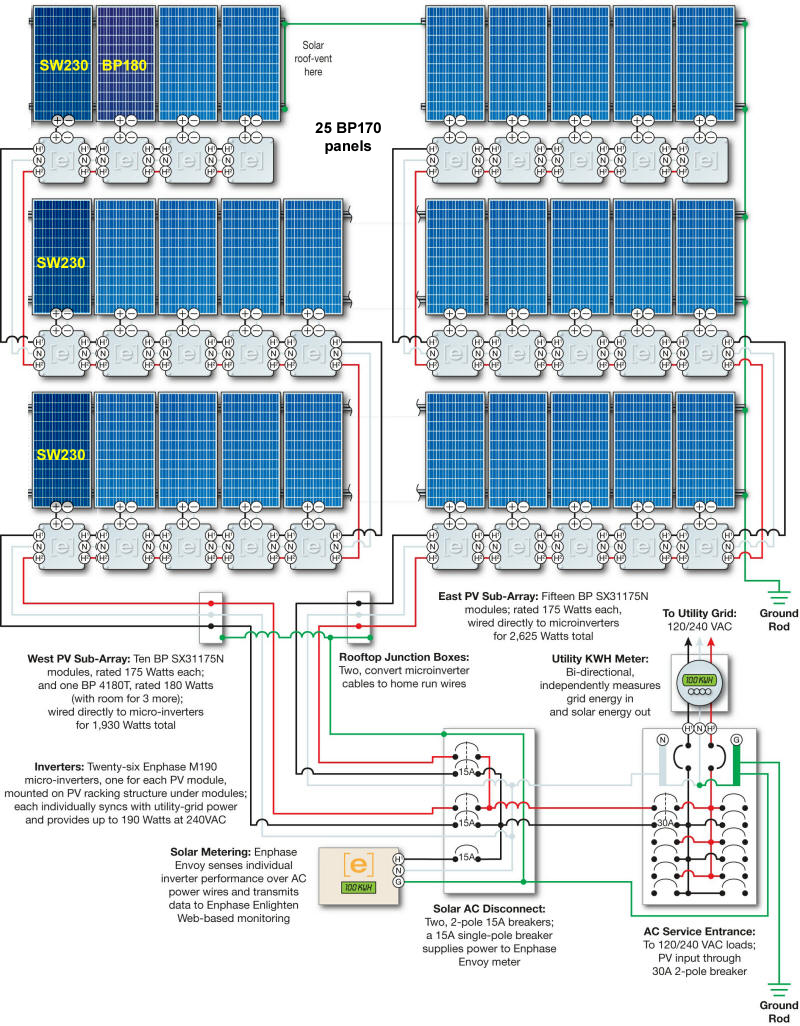To design a solar power system you first need to know how much power you
use. Actually before that you need to really work at reducing your
usage so that your system costs will be lower. My wife and I have
already done all we can think of to reduce our energy
footprint - read more about that on my
Sustainable Living page.
By reviewing my past 12 months of electric bills I learned that we
use an average of 550 KWh/month. This is pretty good considering
that we both have home businesses which use computers and equipment.
As a frame of reference the average US household used 880KWh/month in
2006. Take a look at your recent electric bill and see how
your home stacks up - there may be room for improvement!
So using 550kWh as a design goal was the starting point. For
reasons that date back to off-grid solar houses that ran on DC and
batteries, solar systems are rated in the total KWh capacity of the
solar panels and not the AC power produced. Since the inversion process is inefficient there is
typically a derate factor used to calculate the AC KWh of a given solar
array. This is typically calculated at .77. So a 1 KW solar
array will yield about .77KW of usable AC power. However the
Enphase micro
inverters I plan to use have better efficiency that is calculated at
.819 - a significant improvement!

The US
National
Renewable Energy Laboratory has a web site tool called
PV Watts that allows you to calculate the performance of a given
solar array based on solar wattage, it's location, climate, tilt, orientation and capacity.
By trying a variety of panels of different wattages and quantities (see
panel siting)
I settled on an initial price performance trade-off of using 21 175 Watt
BP 175B panels that produce a
total of 3675 Watts at the panels. That translates into an annual
production of around 3923 KiloWatts of AC power depending on weather
variables. (I have added panels over the years since the original
installation - see below)
Here
is the result of the PV Watts calculations showing the estimated monthly
AC energy production for the current array (29 inverters).
Note: I have been adding panels as I can afford them:
added 2 175W panels: Aug. 22, 2010
added
2 175W panels June 29, 2011
added 1 180W panel July, 2011
added 3 230W panels June 2012
added 2 245W panels March 2013
added 1 245W panel on house October 2016
See the next page for more details of the system performance and
costing.
Click here to see current and historical performance charts since my system was
installed.
September 2011. Enphase have released a
study showing that their microinverters out perform PVWatts
calculations by up to 8%. They looked at regular string inverters
and found that they underperformed PVWatts by up to 8%. So this
validates my decision to invest in Enphase inverters.
Below is an updated system diagram as of June 2012, click on the image to download a
full page printable pdf version.
